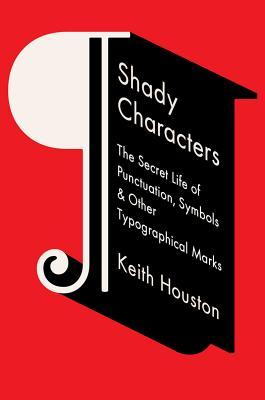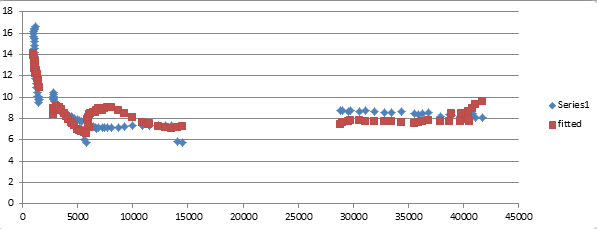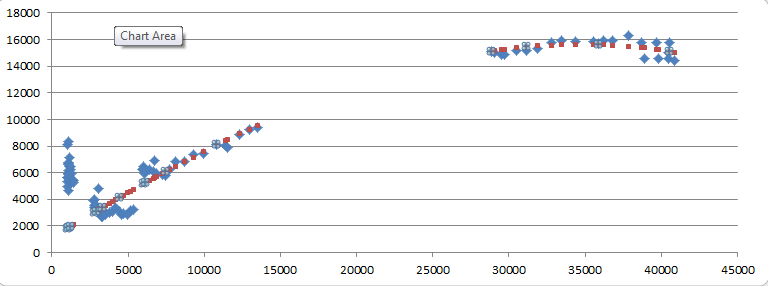Cat on a Hot Tin Roof by Tennessee Williams
My rating: 3 of 5 stars
We all remember the pain of reading Shakespearean plays in school. Sadistic English teachers with shattered dreams of being something better forcing us to learn whole passages by rote …the quality of mercy is not strained…, without once reflecting on the irony of their own lack of mercy.
If you had intellectually snobby parents like mine, the closest to sympathy their innate veneration of the Bard would allow, would be the grudging admission that, “well, really Shakespeare is not meant to be read. It’s meant to be performed.”
Actually, during the later years in which my own intellectual snobbery got me reading his plays autonomously, I never found this to be true. Unless you’d already studied Henry CXXII part VI, live performances went too fast; you missed too much of the subtle word play or the historical context. Idem for Ibsen. As for my favourite playwright Miller, I always found the dialogue to be so supremely evocative of the scene that if anything a live performance introduced risks of spoiling the perfect acting I imagined in my own head.
However, for Tennessee Williams, I don’t think this is the case – at least not as far as ‘Cat on a Hot Tin Roof‘ is concerned. I read the play, never having seen it staged nor having watched the film. My first impression was the dialogue came across as hammy, overdone and at times (needlessly and repetitively) redundant, (such that the point could have been made with fewer lines and more subtext). To wit, the titular feline metaphor is hammered into the reader’s ears in Act I. Not once, but twice.
Moreover, if you are looking for an entertaining plot or clever character arcs, you have come to the wrong place. Williams is writing as an American realist – he sees little scope for moral progression, at least not in a story that takes place over one steamy night in the big house of a Southern plantation. This left me wondering what the big deal with Cat might be, whether it wasn’t just a mediocre script that benefited unduly from good timing and a nascent American Empire, hungry to grow cultural roots in the fertile soil of its burgeoning economy.
On reflection, though, it occurs to me that these shortcomings would be somewhat attenuated in a live performance. There, we can imagine how strong performances might make the Southern nouveaux riches sparkle: the droll alcoholism in the fallen favourite son Brick, the desperate aching of womanhood in his wife Margaret. The bellicose, base honesty in his father, Big Daddy.
Indeed, Cat might be as much about the atmosphere as the story. It evokes a particular mood and feeling; which perforce comes alive not in the words themselves, but in how they are spoken and in the silences that can unshroud a deeper meaning. This is not a finished piece of literature. Rather, it is a set of instructions to the actors and director, and should perhaps be read by them and them alone.
View all my reviews
Month: October 2023
Non-fiction is just fiction written by authors who are too lazy to think up a good story
Shady Characters: The Secret Life of Punctuation, Symbols & Other Typographical Marks by Keith Houston
My rating: 3 of 5 stars
Sure, non-fiction is a way of getting a lot of ‘facts’ down on a page – some of those facts might even be interesting. But you can do that in fiction too; oftentimes much better. Think of how much historical context is written into Trollope’s Vanity Fair; how much social history of the early 19th Century, all effortlessly woven in to a cracking good yarn. Without the constraints of a good story, non-fiction authors often give in to the temptation to dump an enormous amount of information in an unstructured, unsorted way that leaves the reader overwhelmed, confused or just plain bored. This is why I don’t read a lot of non-fiction.
For Keith Houston’s Shady Characters, I made an exception. This was partially because the subject matter – the origin stories of punctuation symbols, weird and common – was sufficiently quirky and yes, so incredibly nerdy, that it seemed bound to read a little differently, even for non-fiction. It was also because the book fell into my hands at a moment when I had nothing else to read.
In all, the book was not a complete disappointment. I learned some wonderfully useless things about punctuation marks I never knew existed, like the interrobang – a short-lived 20th Century hybrid of the question mark and the exclamation point, which looks like this: ‽
More usefully, the twisted road to modern typography takes you past some genuinely interesting historical waypoints. I was particularly fascinated by the detailed description of the typesetting used by Johannes Gutenberg for his 42 line bible, which was, after all, the ‘Star Wars: A New Hope’ of books. It blows my mind to think that with all the algorithmic typesetting we have today, the line spacing used to justify the first ever printed book is so perfect that it remains, to this day, the best typeset book in the history of print.
Another plus point (see what I did there?) was Houston’s clever use of the punctuation, fonts and even writing styles he describes, in that respective chapter to illustrate the examples he’s discussing.
All that said, Shady Characters succumbs to the original sin of non-fiction books, allowing its author to indulge in detours and asides that made certain paragraphs seem like we would never get to the next ¶ (which is called a ‘pilcrow’, in case you never knew).
Even more irksome is the New York Times-reading, smug intellectualism of the author. Just as the nouveau-riche indulge in conspicuous displays of wealth in a way ‘old money’ never would, American intellectuals like Houston always try too hard to be literate and clever, made desperate by their transatlantic cultural inferiority complex. In doing so, they sacrifice something of the message in pursuit of their ostentatious displays of learning. Bad writing is when, while reading, you can hear the sound of the author typing. In reading this book, there were moments when the sound of Houston’s ego echoed with every keystroke.
With fiction, it is the story that acts to curb the author’s ego, because he or she is bound by the plot and by the fictional characters, who – once defined – begin to tell their own stories. In this book, Houston had no characters to whom he had to stay true (at least not in the figurative sense).
I ask you, is it so hard to weave knowledge into a true yarn‽
View all my reviews


